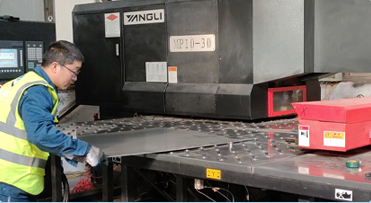chicken house exhaust fan
Nov . 24, 2024 16:52 Back to list
chicken house exhaust fan
The Importance of Chicken House Exhaust Fans A Comprehensive Overview
In modern poultry farming, the health and productivity of chickens are paramount. To ensure optimal conditions for growth and egg production, farmers have increasingly turned to various technologies, one of the most significant being the chicken house exhaust fan. These fans play a crucial role in maintaining a suitable environment within poultry houses, impacting everything from air quality to temperature regulation.
Why Ventilation Matters
Chickens are highly sensitive to their environment. Poor ventilation can lead to a buildup of harmful gases such as ammonia and carbon dioxide, which are commonly produced by chicken waste. Excessive humidity is another concern; it can foster the growth of pathogens and promote respiratory diseases. Effective ventilation solutions, particularly exhaust fans, help mitigate these issues by promoting air circulation and ensuring the removal of stale, contaminated air.
How Exhaust Fans Work
Chicken house exhaust fans are designed to pull air out of the poultry house, creating a negative pressure inside. This negative pressure draws in fresh air from outside, mixing it with the air inside the house. It allows for the continuous renewal of air, ensuring chickens have access to fresh oxygen while simultaneously getting rid of excess moisture and harmful gases.
The efficiency of these fans can significantly affect the temperature inside the poultry house. During the warmer months, exhaust fans work to lower the internal temperature by effectively removing hot air. Conversely, in winter, they can help to maintain a comfortable environment by preventing drafts while still regulating humidity levels.
Selecting the Right Exhaust Fan
chicken house exhaust fan

Choosing the right exhaust fan for a chicken house depends on several factors, including the size of the poultry house, the number of birds, and regional climate conditions. Farmers often rely on performance metrics such as airflow rate, energy consumption, and noise levels when making their selection. High-efficiency fans may come with higher upfront costs but can save money in the long run through reduced energy bills and lower maintenance requirements.
It's also essential to consider the design and placement of these fans. Proper positioning ensures maximum airflow and effective ventilation. Fans should be strategically placed to promote cross-ventilation and enhance air circulation throughout the entire space.
Maintenance and Best Practices
Regular maintenance of exhaust fans is crucial for their efficiency and longevity. Dust and debris can accumulate over time, obstructing airflow and reducing the fan's effectiveness. Farmers should develop a maintenance schedule that includes cleaning the blades, checking electrical components, and inspecting belts and motors for wear.
Additionally, utilizing variable speed controls can enhance efficiency, allowing operators to adjust fan speed according to the specific needs of the flock and the ambient conditions outside. This adaptability not only enhances animal welfare but also conserves energy, aligning well with sustainable farming practices.
The Bottom Line
Investing in a quality chicken house exhaust fan is essential for anyone involved in poultry farming. These systems not only improve the immediate living conditions for chickens but can also lead to better feed conversion rates and overall productivity. Moreover, with growing consumer demand for higher animal welfare standards, ensuring a stable and healthy environment for poultry is more important than ever.
In conclusion, chicken house exhaust fans are a fundamental asset in modern poultry operations. They facilitate proper ventilation, maintain air quality, and regulate temperature, contributing to healthier poultry and, ultimately, a more successful farming enterprise. As the industry continues to evolve, incorporating effective ventilation solutions will remain a key element in producing high-quality poultry products while promoting animal welfare.
-
Hot Sale 24 & 18 Door Rabbit Cages - Premium Breeding Solutions
NewsJul.25,2025
-
Automatic Feeding Line System Pan Feeder Nipple Drinker - Anping County Yize Metal Products Co., Ltd.
NewsJul.21,2025
-
Automatic Feeding Line System Pan Feeder Nipple Drinker - Anping County Yize Metal Products Co., Ltd.
NewsJul.21,2025
-
Automatic Feeding Line System - Anping Yize | Precision & Nipple
NewsJul.21,2025
-
Automatic Feeding Line System - Anping Yize | Precision & Nipple
NewsJul.21,2025
-
Automatic Feeding Line System-Anping County Yize Metal Products Co., Ltd.|Efficient Feed Distribution&Customized Animal Farming Solutions
NewsJul.21,2025






